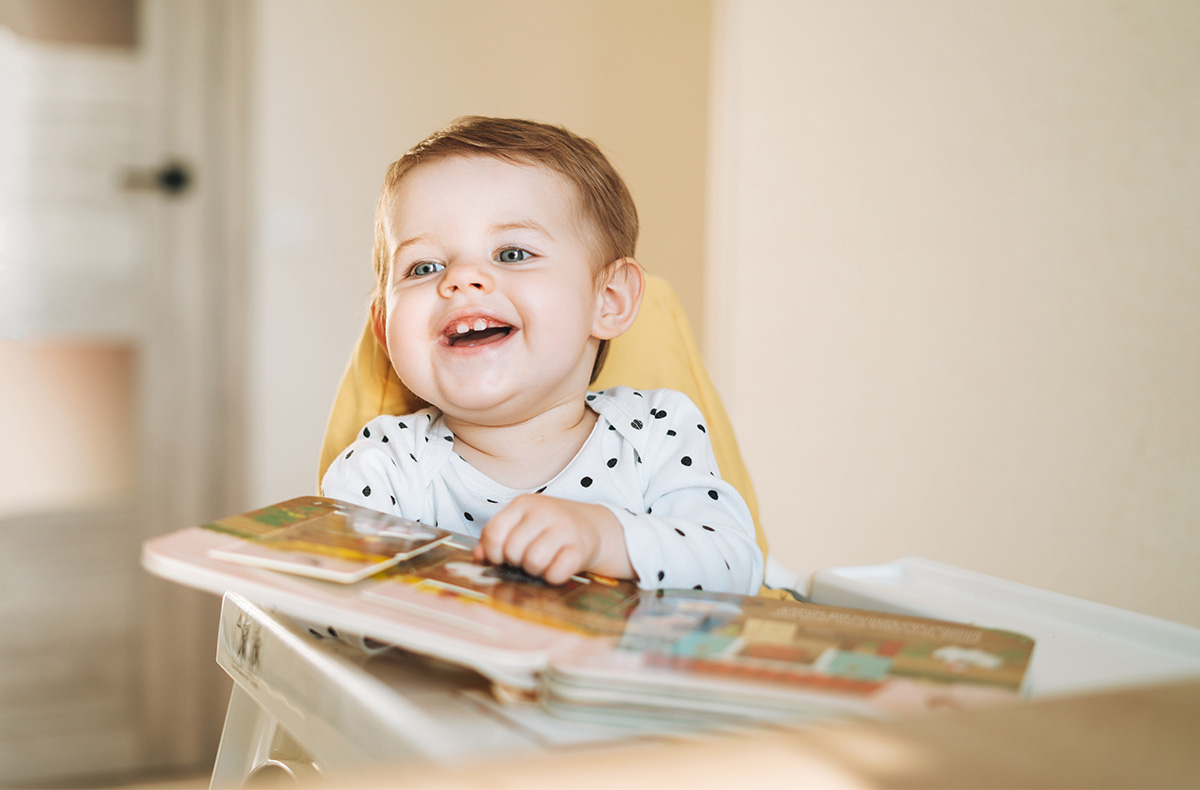While it may seem that infants care about nothing more than milk, sleep, and the colors on their mobiles, they are constantly absorbing information from all directions. Their environment is rich with intriguing language and sounds, all of which are new and potentially useful to them. These sounds of course include all your loving praise and goofy baby talk, but also some other very important noises. Around three months old, they will discover that some of those sounds they hear are coming out of their own mouths. Babies may be entertained by their own gurgles and babbling, but they soon learn that there is something more powerful at play, a potent sound that they can harness and perhaps even weaponize.
Baby’s First Way of “Talking” to You
Around three months, babies learn that their ear-piercing cries will have everyone come running and get their needs met almost instantly. This is communication, and though it may be mysterious and maddening for parents, it is in essence a baby’s first form of communication. As frustrating as it may be, this should be celebrated as a milestone on your baby’s path to language development.
Crying is of course instinctive as a sign of distress or discomfort, but many crafty little babies soon begin utilizing this tool whenever they want attention. This is known as “fake crying” and can drive parents mad, as they unsuccessfully run through diaper check, feeding, room temperature change, etc. in an attempt to comfort their child. The bad news – it can go on for hours and even result in frantic calls to the doctor for especially panicky parents. The good news – if nothing is really wrong, your baby is “talking to you” and telling you they want you around. How sweet!
While the three-to-six-month period may be the start of increased crying, there is a lot else happening and ways that parents can help their child as much as possible, some of which may even reduce crying.
Nonverbal Communication
Not all of your interactions and “conversations” with your baby will be quite so demanding or intense as the crying spells, and many of these moments will be treasured for a lifetime. Babies around this age will begin making eye contact more, smiling at funny faces, and laughing, all of which are cherished forms of interaction. They may also get better at recognizing different people’s voices and tones, and you may be surprised by just how much they are absorbing from their environment, such as when you see your baby instantly look at the dog when they hear a barking noise.
Babies at this age may start to recognize and physically respond to some words like “Mama,” “bye-bye,” or their name. Their recognition is based more on realizing the significance of these words rather than understanding their specific meanings.
Other Vocalizations
Apart from crying, babies from three to six months will begin expressing themselves in various other ways. You’ll hear different types of laughs (and assorted cries), plus what is known as “cooing,” which sounds a bit like squeaking. Towards the end of that six-month period, most babies will have started babbling, which usually comes in the form of a repeated bilabial sound like ba-ba-ba-ba, or if you’re lucky, ma-ma-ma-ma.
How to Help Babies Develop Language at Three to Six Months
During this crucial period of language development, parents play a pivotal role in fostering their baby’s linguistic skills. One easy and helpful activity for parents is to narrate daily activities and observations, treating their infant as though they understand every word. There is a limitless world of words and sounds around you, and every detail offers an opportunity for verbal engagement. Whether it’s describing the colors of the curtains or what you’re wearing, every verbal interaction contributes to the baby’s language acquisition journey. Use varied voices and tones and you’ll have a rapt audience as you tell the epic tale of how you are chopping a carrot.
When you think maybe you and the baby have grown tired of you narrating the minutiae of your surroundings (“The table has four corners! Wow!”), you can always turn to that bonding time classic – story time with a book. Babies at this age will obviously not understand that the words on the page mean anything, but they will start to get into the vocal rhythms, the character voices, and of course the pictures.
At this stage, babies are taking in every sound and starting to piece together clues as to what each one may mean. The best thing a parent can do to help them on their path to language acquisition is to make their environment as language-rich as possible. That means talking, reading, and encouraging babies to make their own noises, and trying to get them to replace those cries with some happier sounds.


